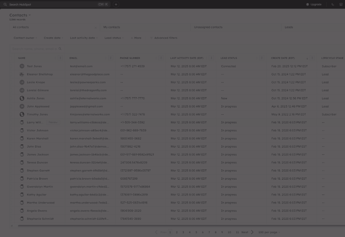Customers are the heart of every business, making customer acquisition and retention crucial. When done right, customer acquisition helps build an army of loyal customers, boosts sales and revenue, and increases your confidence in the marketplace.
An Invesp study reveals it costs five times more to attract a new customer than to keep an existing one. In addition, the study shows that 44 percent of companies focus more on customer acquisition while only 18 percent focus on retention.
You undoubtedly want to channel your efforts toward acquiring new leads and turning them into loyal customers and business advocates. This can be a hard nut to crack, however, without a solid customer acquisition strategy.
Demand generation and lead generation come in handy here. This guide focuses on the differences between the two customer acquisition strategies.
What is Demand Generation?
Demand generation is an inbound marketing strategy for attracting new leads. It deals with how you package your marketing materials and present them to your target audience. When done right, demand generation helps get customers excited about your brand, products, and services.
This strategy helps build brand awareness, inform your target audience, and build trust—all of which you need to make it in the world of digital marketing. The good news is you can effortlessly integrate these into your business through demand generation.
What is Lead Generation?
An inbound lead generation strategy is a way to increase leads' interest. When done correctly, lead generation helps nurture leads to convert them to first-time and repeat buyers. It's also a remarkable way to turn strangers into loyal advocates and promoters of your brand.
How is Demand Generation different from Lead Generation?
The main difference between demand and lead generation is one focuses on customer attraction while the other focuses on conversion. Demand generation is an inbound marketing strategy that attracts new customers. In contrast, lead generation is used to nurture and convert leads to paying customers and repeat buyers.
Advantages
Inbound marketing strategies involving either lead or demand generation both have benefits. Otherwise, they wouldn't be the popular digital marketing strategies they are today. Below, we'll examine the advantages of demand and lead generation.
Advantages of Demand Generation
- Helps create brand awareness to increase market reach and influence
- Gives brands the competitive edge to compete favorably with competitors
- Great for sparking interest in potential customers
- Helps attract qualified leads
- Makes use of multiple strategies, like social media and content marketing
- Cost-effective and doesn't cost an arm and a leg to implement
- Significantly helps reduce customer turnover
Advantages of Lead Generation
- Helps grow your brand's following and customer base
- Serves as a reliable source for reviews and customer stories that you can use to establish credibility
- Helps boost sales and revenue
- Is a means to acquire qualified leads
- Helps build visibility and brand awareness
- Cost-effective and affordable inbound marketing strategy
- Easy to implement and automate
Disadvantages
While there are many great benefits of lead and demand generation, each comes with a few downsides as well. Let's take a look at the disadvantages of each in turn.
Disadvantages of Demand Generation
- Outsourcing demand generation may yield insignificant results.
- You need a skilled team to create catchy content to attract customers.
- Some audiences only respond to specific demand generation materials (like white papers), which means you can't necessarily use the same material for multiple industries.
Disadvantages of Lead Generation
- Sometimes the ROI is low or nonexistent.
- Follow-up strategy is crucial to retain leads already generated.
- Outsourcing lead generation may yield almost no positive results.
- Process automation may be a little costly.
Tactics
Lead and demand generation inbound marketing strategies employ many different tactics to get results. Below are examples of some of the tactics you can use in your demand and lead generation efforts.
Demand Generation Tactics
- Creating and publishing stellar content on digital platforms like your business blog and social media platforms
- Using buyer-intent data to find in-market buyers
- Promoting content on different platforms to improve engagement
- Marketing automation
- Leveraging paid advertising strategies to boost reach
Lead Generation Tactics
- Hyper-personalizing marketing and outreach
- Using lead generation forms
- Using analytical tools to understand traffic and user behavior
- Relying on automation to simplify and speed up the process
- Creating interactive, engaging, and informative content like white papers
- Relying on video content to boost engagement
- Relying on new tech like chatbots for timely response to customer queries
How to Choose the Best Strategy for Your Business
We've discussed the benefits and addressed the limitations. But how can you know when to use one strategy over the other? Let's dive into the answer to this question.
When to use Demand Generation
Use demand generation to create awareness and target new potential customers. Informative content goes a long way toward educating your audience. In turn, this helps establish your authority and credibility in the industry. Demand generation strategies usher leads into your marketing funnel and warm them up for conversion.
When to use Lead Generation
You should use lead generation when customers are ready to convert. It's also a good show of brand following and customer-base growth. Besides boosting sales and revenue, the strategy also goes a long way toward establishing credibility.
Not sure where to begin?
Choosing between lead generation and demand generation should be based on your business needs and goals. These marketing strategies can be hard to pull off, however, if you don't know what to do.
Thankfully, this is where demand and lead generation companies can help. Our team at Eternal Works is knowledgeable and equipped to help guide you when it comes to inbound marketing. To get started on customer acquisition and retention, don't hesitate to schedule a call with us today and download our template to use hashtags like a pro!



